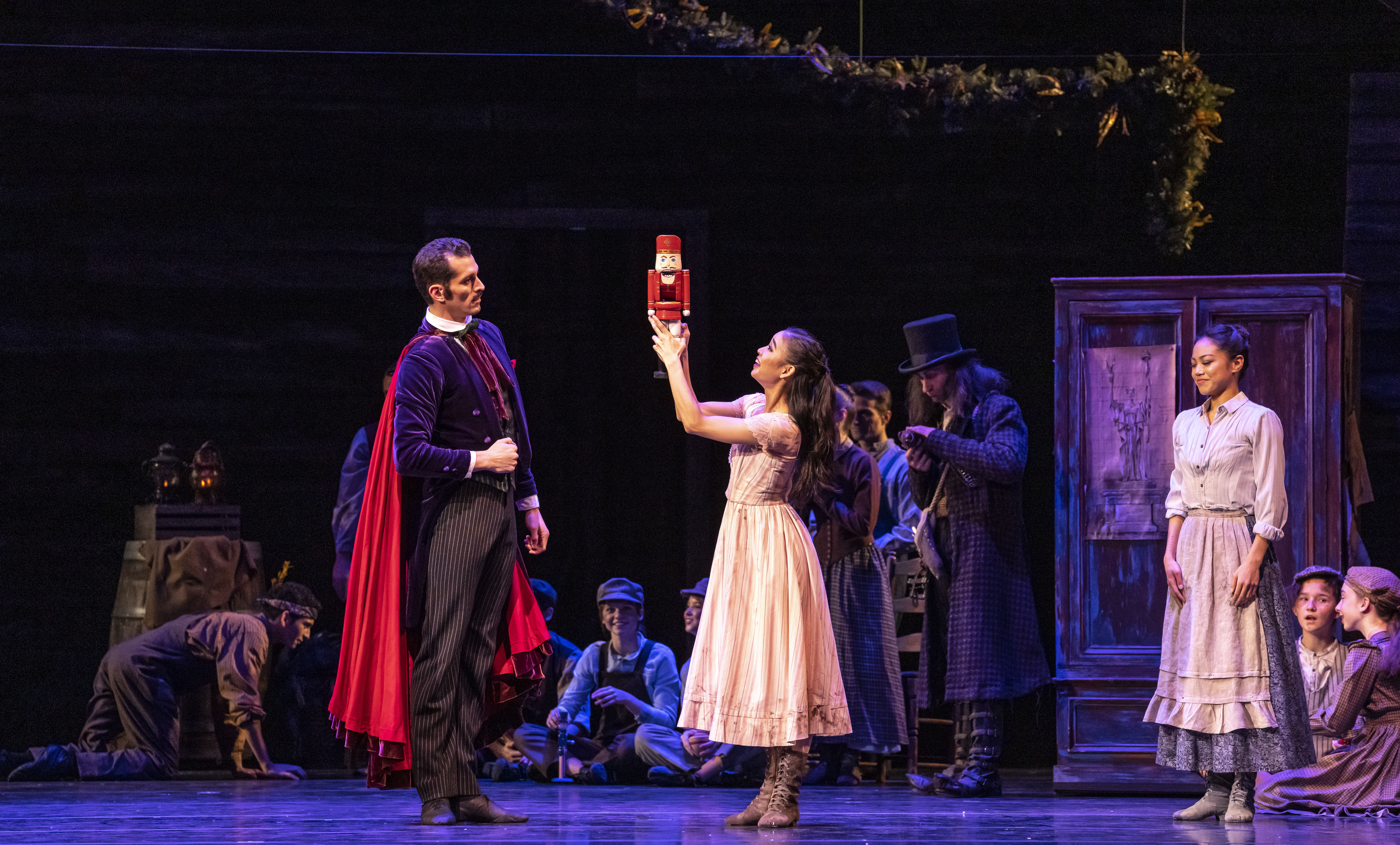
The basic plot of the famous The Nutcracker ballet is a familiar story. A young girl, Clara, receives the gift of a Nutcracker on Christmas Eve. That night, she has a beautiful dream in which the Nutcracker comes to life and becomes a dazzling prince. He takes her on a journey to far off and magical places. When she awakens the next morning, she is unsure of what was real and what was a dream. However, she knows that it was the best night of her life.

Nutcracker fans attending the Joffrey’s production of the piece will certainly recognize the main plot points. The young girl still receives the Nutcracker, and she continues on a journey beyond her wildest dreams. However, there are some shifts; since 2016, the Joffrey has staged its Nutcracker with a unique Chicago theme and backdrop. Here, the young girl's name is Marie (Valeria Chaykina). Set with the backdrop of the 1893 World's Columbian Exposition (the Chicago World’s Fair), Marie and her young brother, Franz (Samuel Beukenkamp), live in a small shack with their widowed mother (Victoria Jaiani), a sculptor working on the fair. Marie receives her precious Nutcracker from the Great Impresario of the Fair (Edson Barbosa), a mysterious figure who not only designed the World’s Fair, but also has some magical tricks up his sleeve. When Marie and the Nutcracker (Alberto Velazquez) embark on their journey, the destination becomes a dream version of the World’s Fair. Countries from around the world are represented and given the opportunity to dance for Marie, the Prince, the Great Impresario, and Queen of the Fair (Victoria Jaiani).
I personally have seen my fair share of Nutcracker performances.This is only one person’s opinion, but I can say with certainty that it has been a long time since I was quite this awestruck by the holiday classic.
The creative team firmly plants the production in Chicago—particularly with the support of the projection design by 59 Productions. Chicagoans will recognize familiar sights including the river and Navy Pier’s Ferris Wheel—the first one was built in 1893 for the Chicago World’s Fair, and always carries a strong presence in the background. When combined with the designs of lighting designer Natasha Katz and scenic, costume, and mask designer Julian Crouch, the city we all know takes a magical shift.

Marie and the Nutcracker’s first stop on their journey is a snowy wonderland. Choreographer Chistopher Wheeldon’s work does not disappoint as the dancers take the stage. As they complete their jaw-dropping choreography, snow begins to fall. The lights shift to various shades of blue, snow-covered trees slowly move on stage, and projections of sparkly snowflakes burst around them. As the backdrop of Chicago’s skyline and Lake Michigan took form in the background, I leaned forward, curious to see what magical feat would happen next. Judging from the thunderous applause as the dancers finished their number, it was clear that this evening’s audience was just as entranced.
The gorgeous choreography only flourishes from there—particularly as we travel into the Dream Fair in Act Two. Jaiani as the Queen of the Fair kicks off the event in this act, and she simply dazzles in this performance. Her impressive skill and stage presence elicited cheers from the audience with every jump and twirl.
The Fair Pavilion dancers bring further joy and humor into the story, truly bringing the backdrop of the Chicago World’s Fair to life. We travel from country to country with each dance piece—including Buffalo Bill’s Wild West Show. The audience roared with laughter as Dylan Gutierrez swung his lasso around the stage, and the three dancers alongside him (Coco Alvarez-Mena, Dara Holmes, and Lauren Quinn) helped ground us in the saloon setting.

Exquisite choreography, inspiring design, and a stellar ensemble make Joffrey Ballet’s The Nutcracker a must-see of the holiday season. I know I personally may have just found my new holiday tradition.
Joffrey Ballet’s The Nutcracker runs through December 27 at the Lyric Opera of Chicago, 20 N. Wacker Drive. Tickets are $40-$185 for Tuesday-Sunday performances. Running time is 2 hours and 20 minutes, including intermission.
For more information on this and other plays, see theatreinchicago.com.
Did you enjoy this post and our coverage of Chicago’s arts scene and sometimes beyond? Please consider supporting Third Coast Review’s arts and culture coverage by making a donation by PayPal. Choose the amount that works best for you, and know how much we appreciate your support!
